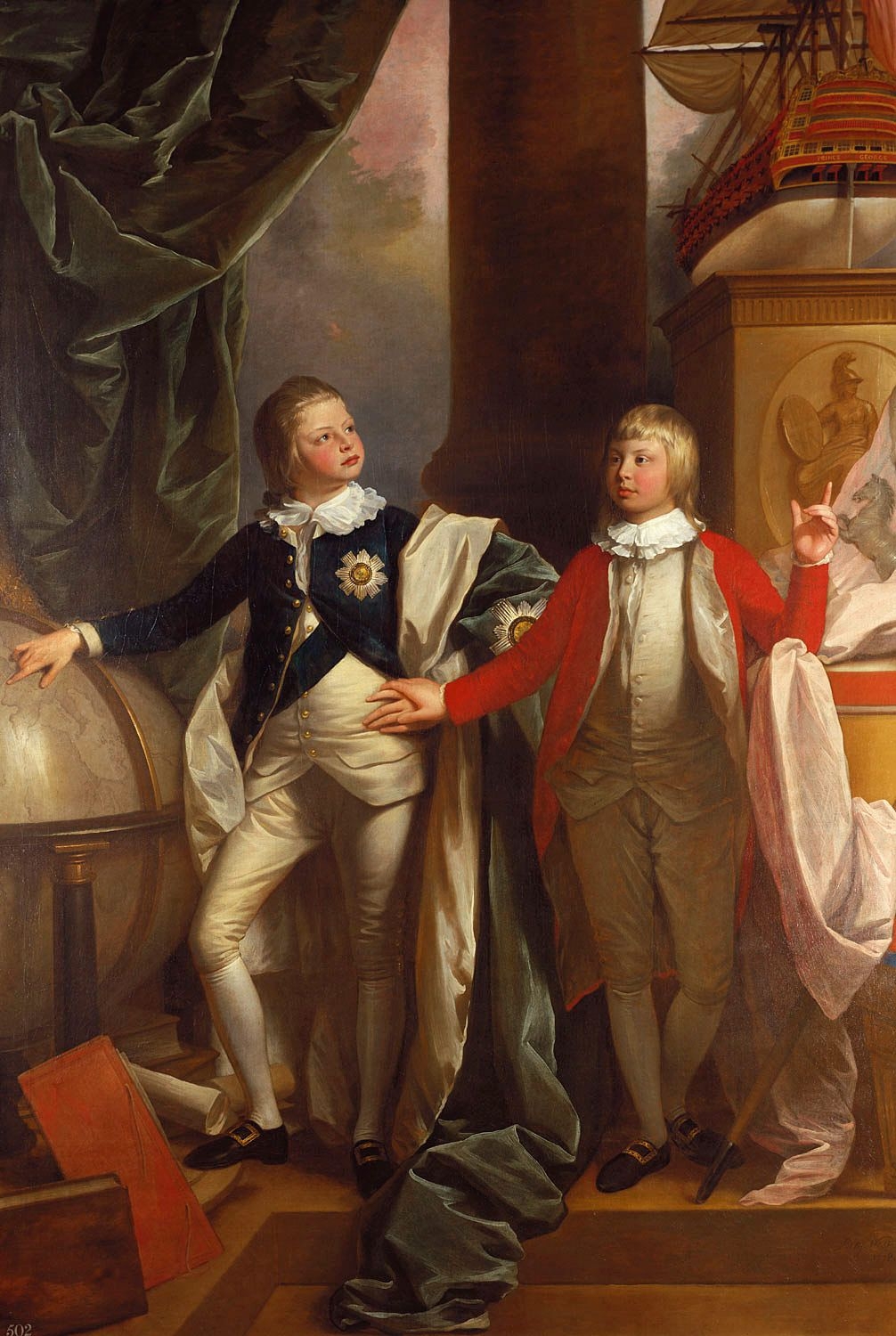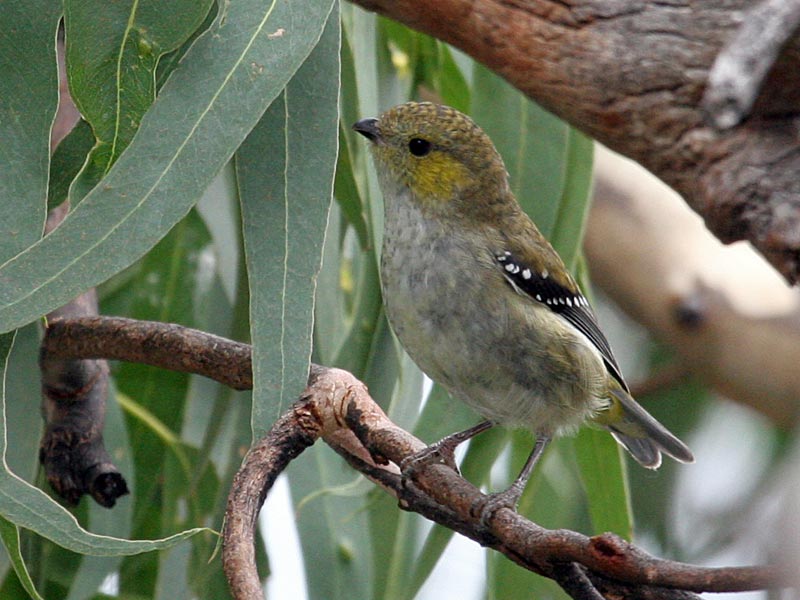|
Tongerlongeter
Tongerlongeter ( – 20 June 1837) was a leader of the Poredareme clan of Aboriginal Tasmanians and a commanding figure of the Aboriginal resistance to British invasion during the Black War in Tasmania. Early life Details of Tongerlongeter's early life are sparse. He was born around the year 1790 into the precolonial Aboriginal society of the Poredareme group of people who resided along the coast and inland from Great Oyster Bay in Eastern Tasmania. By the 1810s, when the British started to encroach on Poredareme country, Tongerlongeter had become a tall, powerful and intelligent man. Black War European Seal hunters and whalers began exploiting Poredareme country during the late 1810s and early 1820s. They exhibited extreme violence against the local Aboriginal population, raiding their encampments, killing the men and abducting the women and girls into sexual slavery and forced labour. Those killed and kidnapped would have been well known to Tongerlongeter causing him and hi ... [...More Info...] [...Related Items...] OR: [Wikipedia] [Google] [Baidu] |
Montpelliatta
Montpelliatta ( – 1836) was a leader of the 'Big River' group of Aboriginal Tasmanian clans during the Black War of the 1820s and early 1830s in Tasmania. He is regarded as one of the main organisers of Aboriginal resistance to British colonisation during this period. Early life Very little is known of Montpelliatta's early life. He was probably born around the year 1790 into the traditional Aboriginal society of the 'Big River' group of people who resided in central Tasmania before British colonisation. Black War Conflict with the 'Big River' clans began in 1804 when a detachment of soldiers garrisoned at Risdon shot and killed several Aboriginal people while they were conducting a kangaroo hunt close to the newly established settlement. Further British incursions into their country continued into the 1810s with the arrival of pastoralists, bushrangers and escaped convicts from the settlements of Hobart and Launceston. Aboriginal people were often shot, with women and child ... [...More Info...] [...Related Items...] OR: [Wikipedia] [Google] [Baidu] |
Kikatapula
Kikatapula ( – 13 May 1832) was a leading Indigenous figure during the British invasion and colonisation of Van Diemen's Land, later known as Tasmania. Also called Kickerterpoller or Black Tom Birch, he spent part of his youth living with the colonists, learning English and being baptised as a Christian. During the 1820s, he withdrew from British ways, and became a feared and formidable leader of Indigenous resistance during the early stages of the Black War. He was eventually caught and jailed and, with limited options, he agreed to act as a guide for a roving party of armed colonists to capture other Aboriginal Tasmanians or Palawa as they are also known. Kikatapula was then ordered to accompany George Augustus Robinson on his 'friendly mission' to round up the remaining Indigenous people and exile them to Flinders Island. After the successful removal of the most notable Palawa (including himself), Kikatapula died guiding Robinson during a later expedition in 1832. Early l ... [...More Info...] [...Related Items...] OR: [Wikipedia] [Google] [Baidu] |
Black Line
} The Black War was a period of violent conflict between British colonists and Aboriginal Tasmanians in Tasmania from the mid-1820s to 1832. The conflict, fought largely as a guerrilla war by both sides, claimed the lives of 600 to 900 Aboriginal people and more than 200 European colonists. The near-destruction of the Aboriginal Tasmanians and the frequent incidence of mass killings have sparked debate among historians over whether the Black War should be defined as an act of genocide. Background The terms "Black War" and "Black Line" were coined by journalist Henry Melville in 1835, but historian Lyndall Ryan has argued that it should be known as the Tasmanian War. She has also called for the erection of a public memorial to the fallen from both sides of the war. The escalation of violence in the late 1820s prompted Lieutenant-Governor George Arthur to declare martial law—effectively providing legal immunity for killing Aboriginal people—and in November 1830 to order a ... [...More Info...] [...Related Items...] OR: [Wikipedia] [Google] [Baidu] |
Paredarerme Language
Paredarerme or Oyster Bay Tasmanian is an Aboriginal Tasmanian, aboriginal language of Tasmania in the reconstruction of Claire Bowern.Claire Bowern, September 2012, "The riddle of Tasmanian languages", ''Proc. R. Soc. B'', 279, 4590–4595, doi: 10.1098/rspb.2012.1842 It was spoken along the central eastern coast of the island by the Oyster Bay tribe, and in the interior by the Big River tribe. Records of the Big River dialect, ''Lairmairrener'' ("Lemerina"), indicate that it was no more distinct than the vocabularies collected along the coast around Oyster Bay; indeed, Little Swanport language, Little Swanport appears to have been a separate language. Big River Tasmanian is attested in a list of 268 words collected by George Augustus Robinson. Coastal vocabularies include the Oyster Bay list of Robinson (357 words), and a second collected by Joseph Milligan of 1,040 words published in 1857 and 1859. The last is the longest vocabulary of any variety of Tasmanian.Bowern (201 ... [...More Info...] [...Related Items...] OR: [Wikipedia] [Google] [Baidu] |
List Of Indigenous Australian Historical Figures
Some Indigenous Australians are remembered in history for leadership prior to European colonisation, some for their resistance to that colonisation, others for assisting Europeans explore the country. Some became infamous for their deeds, and others noted as the last of their communities. Prior to 1788 * Cumbo Gunnerah – 18th century leader of the Kamilaroi people near Gunnedah, New South Wales 1788–1888 * William Barak (1824–1903) – ngurungaeta of Wurundjeri, police tracker, then artist * Bennelong – representative of the Eora People at the time Port Jackson was settled * Barangaroo – a Cammeraygal woman who served the colony as an intermediary under Governor Phillip * Billibellary (1799–1846) – ngurungaeta of the Wurundjeri-willam clan * Calyute – leader of the Pindjarup people at the time of the Battle of Pinjarra * Derrimut – Bunurong elder during European settlement of Melbourne *Dundalli (1820–1855) – Resistance leader in South East Queenslan ... [...More Info...] [...Related Items...] OR: [Wikipedia] [Google] [Baidu] |
William IV
William IV (William Henry; 21 August 1765 – 20 June 1837) was King of the United Kingdom of Great Britain and Ireland and King of Hanover from 26 June 1830 until his death in 1837. The third son of George III, William succeeded his elder brother George IV, becoming the last king and penultimate monarch of Britain's House of Hanover. William served in the Royal Navy in his youth, spending time in North America and the Caribbean, and was later nicknamed the "Sailor King". In 1789, he was created Duke of Clarence and St Andrews. In 1827, he was appointed Britain's first Lord High Admiral since 1709. As his two elder brothers died without leaving legitimate issue, he inherited the throne when he was 64 years old. His reign saw several reforms: the Poor Law was updated, child labour restricted, slavery abolished in nearly all of the British Empire, and the electoral system refashioned by the Reform Acts of 1832. Although William did not engage in politics ... [...More Info...] [...Related Items...] OR: [Wikipedia] [Google] [Baidu] |
Peritonitis
Peritonitis is inflammation of the localized or generalized peritoneum, the lining of the inner wall of the abdomen and cover of the abdominal organs. Symptoms may include severe pain, swelling of the abdomen, fever, or weight loss. One part or the entire abdomen may be tender. Complications may include shock and acute respiratory distress syndrome. Causes include perforation of the intestinal tract, pancreatitis, pelvic inflammatory disease, stomach ulcer, cirrhosis, or a ruptured appendix. Risk factors include ascites (the abnormal build-up of fluid in the abdomen) and peritoneal dialysis. Diagnosis is generally based on examination, blood tests, and medical imaging. Treatment often includes antibiotics, intravenous fluids, pain medication, and surgery. Other measures may include a nasogastric tube or blood transfusion. Without treatment death may occur within a few days. About 20% of people with cirrhosis who are hospitalized have peritonitis. Signs and sym ... [...More Info...] [...Related Items...] OR: [Wikipedia] [Google] [Baidu] |
Wybalenna Aboriginal Establishment , four small islands off the west coast of Flinders Island.
{{dab ...
Wybalenna may refer to: *Wybalenna Aboriginal Establishment on Flinders Island, off the north eastern tip of Tasmania *Wybalenna Island Wybalenna Island comprises four round granite islands with a combined area of about 16 ha, in south-eastern Australia. It is part of Tasmania’s Prime Seal Island Group, lying in eastern Bass Strait west of Flinders in the Furneaux Group. T ... [...More Info...] [...Related Items...] OR: [Wikipedia] [Google] [Baidu] |
Flinders Island
Flinders Island, the largest island in the Furneaux Group, is a island in the Bass Strait, northeast of the island of Tasmania. Flinders Island was the place where the last remnants of aboriginal Tasmanian population were exiled by the colonial British government. Today Flinders Island is part of the state of Tasmania, Australia. It is from Cape Portland and is located on 40° south, a zone known as the Roaring Forties. History Prehistory Flinders Island was first inhabited at least 35,000 years ago, when people made their way from Australia across the then land-bridge which is now Bass Strait. A population remained until about 4,500 years ago, succumbing to thirst and hunger following an acute El Niño climate shift. European discovery Some of the south-eastern islands of the Furneaux Group were first recorded in 1773 by British navigator Tobias Furneaux, commander of , the support vessel with James Cook on Cook's second voyage. In February 1798, British navigat ... [...More Info...] [...Related Items...] OR: [Wikipedia] [Google] [Baidu] |
Mannalargenna
Mannalargenna, also spelt Manalakina (1770–1835), was a Palawa ( Aboriginal Tasmanian) leader and warrior. Biography Mannalargenna (or was Manalakina)a Chief of the Plangermaireener clan in what is now the Ben Lomond tribal area of north-eastern Tasmania. He is described as being 5' 8" and wearing grease and red ochre all over his body. Following the arrival of British in the area, he led a series of guerrilla-style attacks against British settlers in the colony of Van Diemen's Land during the period known as the Black War. In 1829 he freed four Native women and a boy from John Batman's house where they had been held for a year. While it seems as though he joined George Robinson's mission to persuade Native people to "surrender", it is claimed that he was actually directing Robinson away from the people. He was promised that if he helped Robinson he would not be sent to Flinders Island, but this promise was broken and he died in captivity at Wybalenna in 1835. When he ... [...More Info...] [...Related Items...] OR: [Wikipedia] [Google] [Baidu] |
Eumarrah
Eumarrah (born about 1798 in the Midlands near Campbell Town - died 24 March 1832 in Launceston, Tasmania) was an Aboriginal Tasmanian leader. He was known by the names Kahnneher Largenner. He had been part of the group who travelled with George Augustus Robinson on his ''Friendly Mission'' in the late 1820s. A watercolour drawing of "Ehumarah" by Thomas Bock is in the collection of the British Museum The British Museum is a public museum dedicated to human history, art and culture located in the Bloomsbury area of London. Its permanent collection of eight million works is among the largest and most comprehensive in existence. It docume .... References {{authority control 1798 births 1832 deaths Indigenous Tasmanian people ... [...More Info...] [...Related Items...] OR: [Wikipedia] [Google] [Baidu] |


